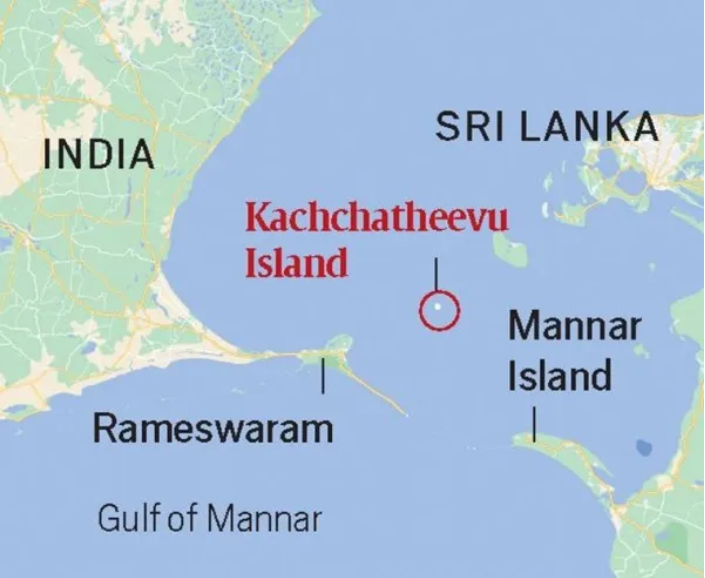ForumIAS announcing GS Foundation Program for UPSC CSE 2025-26 from 19 April. Click Here for more information.
ForumIAS Answer Writing Focus Group (AWFG) for Mains 2024 commencing from 24th June 2024. The Entrance Test for the program will be held on 28th April 2024 at 9 AM. To know more about the program visit: https://forumias.com/blog/awfg2024
Source-This post on Katchatheevu Island is based on the article “Did Congress ‘give away’ Katchatheevu island to Sri Lanka?” published in “The Indian Express” on 1st April 2024.
Why in the News?
PM Narendra Modi recently criticized the Congress for giving away the strategic Katchatheevu island to Sri Lanka in the 1970s.
About Katchatheevu Island

1. Location– Katchatheevu is a small, uninhabited island covering 285 acres located in the Palk Strait, between India and Sri Lanka. Katchatheevu lies 33 km northeast of Rameswaram and about 62 km southwest of Jaffna.
2. Sole Structure on Island– The island’s sole structure is St. Anthony’s Church, built in the early 20th century. Every year, during a festival, Christian priests from India and Sri Lanka jointly conduct services, drawing pilgrims from both countries.
3. Lack of potable water source– Katchatheevu is not suited for permanent settlement as there is no source of drinking water on the island.
What is the history of the Island?
1. Formation– It originated from volcanic activity during the 14th century.
2. Administration:
a. During the early medieval era, the Jaffna kingdom of Sri Lanka governed it.
b. By the 17th century, control shifted to the Raja of Ramnad (present-day Ramanathapuram, Tamil Nadu), who owned Katchatheevu island. Later, it became part of the Madras Presidency.
3. Dispute– In 1921, both India and Sri Lanka, at the time British colonies, claimed Katchatheevu in order to determine fishing boundaries.
What is 1974 Indo-Sri Lankan maritime agreement?
1. In 1974, an agreement signed by Prime Ministers Indira Gandhi of India and Sirima R.D. Bandaranaike of Sri Lanka acknowledged Katchatheevu as part of Sri Lanka’s territory, leading to a change in ownership.
2. The agreement allowed Indian fishermen to access Katchatheevu as before, but didn’t settle fishing rights. Sri Lanka understood that Indian fishermen could only access Katchatheevu for resting, drying nets, and visiting the Catholic shrine without needing a visa.
3. Another treaty signed in 1976 restricted fishermen from both nations from fishing in each other’s exclusive economic zones. However, uncertainty about fishing rights has persists till date.
UPSC Syllabus- Geography and Places in news




